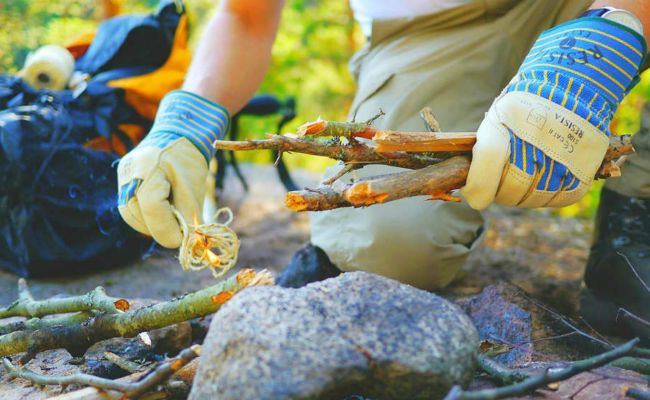
If you want to go camping in the bush, you should develop some bushcraft skills. These include foraging for edible plants, making a fire, and building a tarp shelter. Identifying animals is also one of the essential bushcraft skills. These skills are useful for a variety of outdoor activities, from catching fish to hunting small wildlife. To learn more about bushcraft, read the following article. It will help you survive in the outdoors!
Foraging for edible plants
Foraging for edible plants as part of bush craft skills is a fun activity that requires some knowledge of what to look for. Although it is an important part of culture, it can also prove to be a dangerous activity if you don't know what you are looking for. Here are a few rules to follow when foraging for edible plants. Before embarking on your foraging adventure, ensure you know where to go, what to look for, and how to cook it.
First of all, foraging for edible plants is an essential skill to learn. It will take some time to learn what is available and which plants are safe to eat. While a beginner may not know much about the plants, an experienced forager will know which ones are safe to eat. If you aren't an experienced forager, you should take a guide book, tablet, or e-book reader to help you identify the plants in the area. Always keep a keen eye out for diseased or toxic plants. Remember to wash everything thoroughly before eating and wear gloves to protect your hands from poison ivy.
Making a fire
If you're looking for a new skill to add to your survival toolkit, learn how to make a fire with bushcraft skills. Depending on the amount of fuel and available fuel, a fire can be small or large. Small fuel is about the size of a finger, medium fuel is the thickness of an arm, and primary fuel is about the size of a thigh. To make a fire with bushcraft skills, you need to mix these three components.
While making a fire is simple enough to learn, it can become challenging when conditions are stressful. Fire is a highly mental skill, so it's crucial to stay grounded and relaxed. Using a tarp to cover a fire can help, and warming up your hands before starting the fire can also make a huge difference. You may need to practice in a variety of conditions to learn how to calm yourself and keep your cool.
Making a tarp shelter
If you're a first-time tarp camper, you may be wondering how you're supposed to set it up and keep it secure. The answer is simple. Just follow the steps outlined in this video, which are especially useful for novices. This video covers how to tie knots and what to look for when choosing the proper setup. Plus, it explains the advantages and disadvantages of each configuration.
One of the most common types of tarp shelters is the paracord shelter, which utilizes the entire length of paracord to create the floor of the shelter. A corner of the tarp must be pointing toward the direction of wind to prevent a draft from occurring. To keep rain from running down the paracord, attach drip lines along the edge of the tarp. This shelter is not very tall, but it offers decent head room.
Identifying animals
Identifying animals in the bush is a wonderful skill to develop. Not only can you learn to identify animals in a forest, but you can learn how to track them as well. Animal tracking can be done anywhere and can help you gain an understanding of the landscape around you. When tracking an animal, you can look for signs, such as broken twigs, scratches, or disturbed leaves. Tracking animals will help you predict where they will be, as well as their behavior.
Some of the most reliable signs of water are wild pigeons. These birds spend the day on the plains, but at dusk, they make their way to a waterhole. They drink and then slowly return to their nesting areas. They can be difficult to spot, however, and are easily hunted by birds of prey. Learn to identify the animals you find by reading their signs and behaviors.
Check out the best trail cams on Amazon
Did you miss our previous article...
https://bushcrafttips.com/what-is-bushcraft/tips-for-splitting-wood-with-a-knife
 What is BushcraftSurvival SkillsToolsVideosBushcraft CampsBushcraft KitsBushcraft ProjectsPrivacy PolicyTerms And Conditions
What is BushcraftSurvival SkillsToolsVideosBushcraft CampsBushcraft KitsBushcraft ProjectsPrivacy PolicyTerms And Conditions
